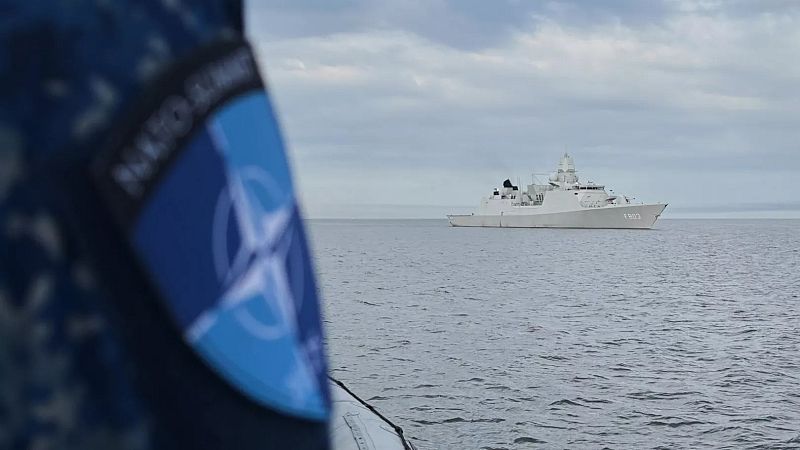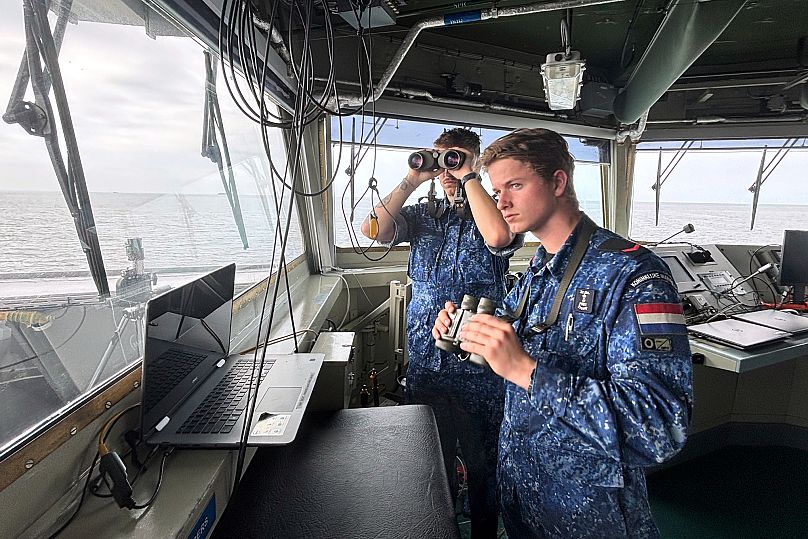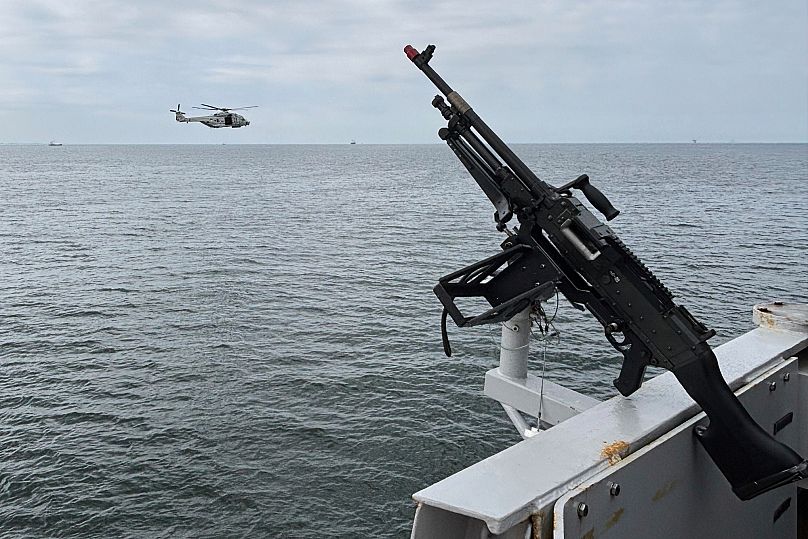NATO annual nuclear exercise 'Steadfast Noon' winds down in the Netherlands

NATO's major annual nuclear exercise is begining to wind down in the Netherlands, with an important part of the drill focusing on protecting the weapons before they are ever used.
Steadfast Noon started on 13 October and involved 71 aircraft from 14 NATO countries.
The long-planned drill took place amid heightened security around military facilities in Europe due to a series of airspace violations by drones, some of them blamed on Russia.
"We've long not talked about this but it's certainly time that we talk to our publics about it. We've seen continued rhetoric from Russia. And again, this isn't sabre-rattling this is about demonstrating that we can do this on any given day," said Chief of NATO Nuclear Operations, Colonel Daniel Bunch.
During the exercises, bomber aircraft and fighter jets that can carry nuclear warheads took off from an airstrip but no nuclear weapons or live munitions are being used.
The bulk of the exercise was held in the North Sea, far from Russia and Ukraine, and involved military bases in Belgium, Britain, Denmark, the Netherlands.
The threats posed by Moscow though are clear in the minds of the leaders of this joint exercise.
"We mentally prepare the people involved actually executing on a tactical level the mission to be able to do this mission. There are multiple steps involved keeping those pilots up to speed to be able to perform them," Lieutenant Colonel Bram Versteeg, the commander of the Dutch air force’s 312 squadron, said on Tuesday.
"It's not like everybody can do it. It is a special mission within NATO. It's a special mission within the Allies and it's a special mission within the Netherlands Air Force."
The United States and the United Kingdom, with their nuclear forces, are key to NATO's strategic deterrence. France also has nuclear weapons but is not a part of the organisation’s nuclear planning group.
NATO officials would not say what kind of scenarios were used to test the 32-nation alliance's nuclear readiness, but they insisted that it is not directed toward any particular country, nor does it relate to current international events.
The United States has provided F-35 jets capable of carrying conventional or nuclear weapons, refuelling planes and other support aircraft. Finland and Poland also sent fighter jets.
Electronic warfare equipment and reconnaissance and intelligence systems will also be used.
The Washington Summit declaration agreed by the alliance’s leaders last year states that "the fundamental purpose of NATO's nuclear capability is to preserve peace, prevent coercion and deter aggression."
"As long as nuclear weapons exist, NATO will remain a nuclear alliance," it said.
The head of NATO's Nuclear Policy Directorate James Stokes told reporters that despite the Kremlin’s continued and heated rhetoric the allies "haven't seen any change in Russia’s nuclear posture" recently.
He underlined that Russia is not a focus of the exercise, but said that NATO continues to monitor Russian military activities, including its use of dual-capable missiles in Ukraine, which could be fitted to carry nuclear warheads.
Steadfast Noon ends on 24 October.
Today



